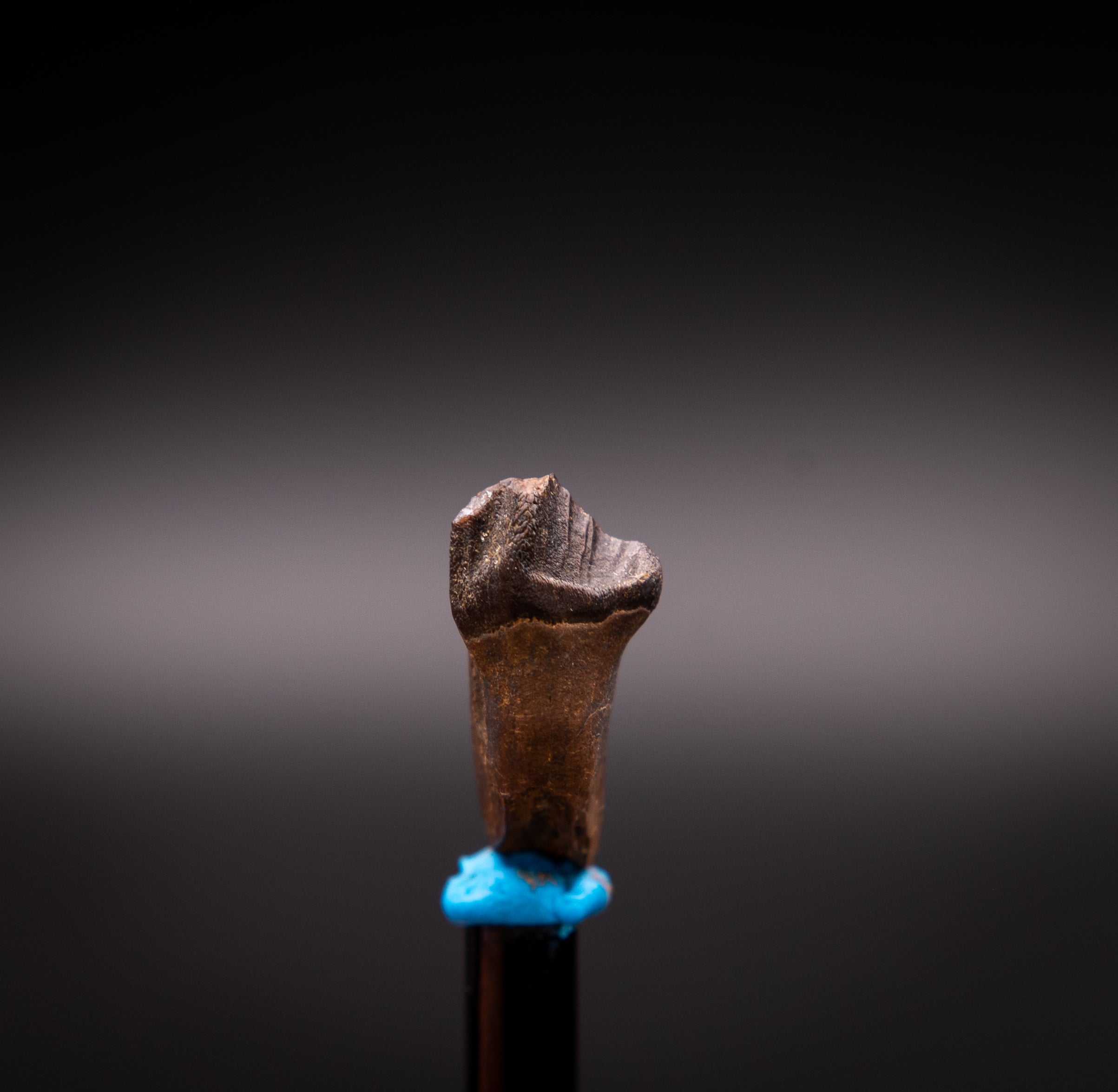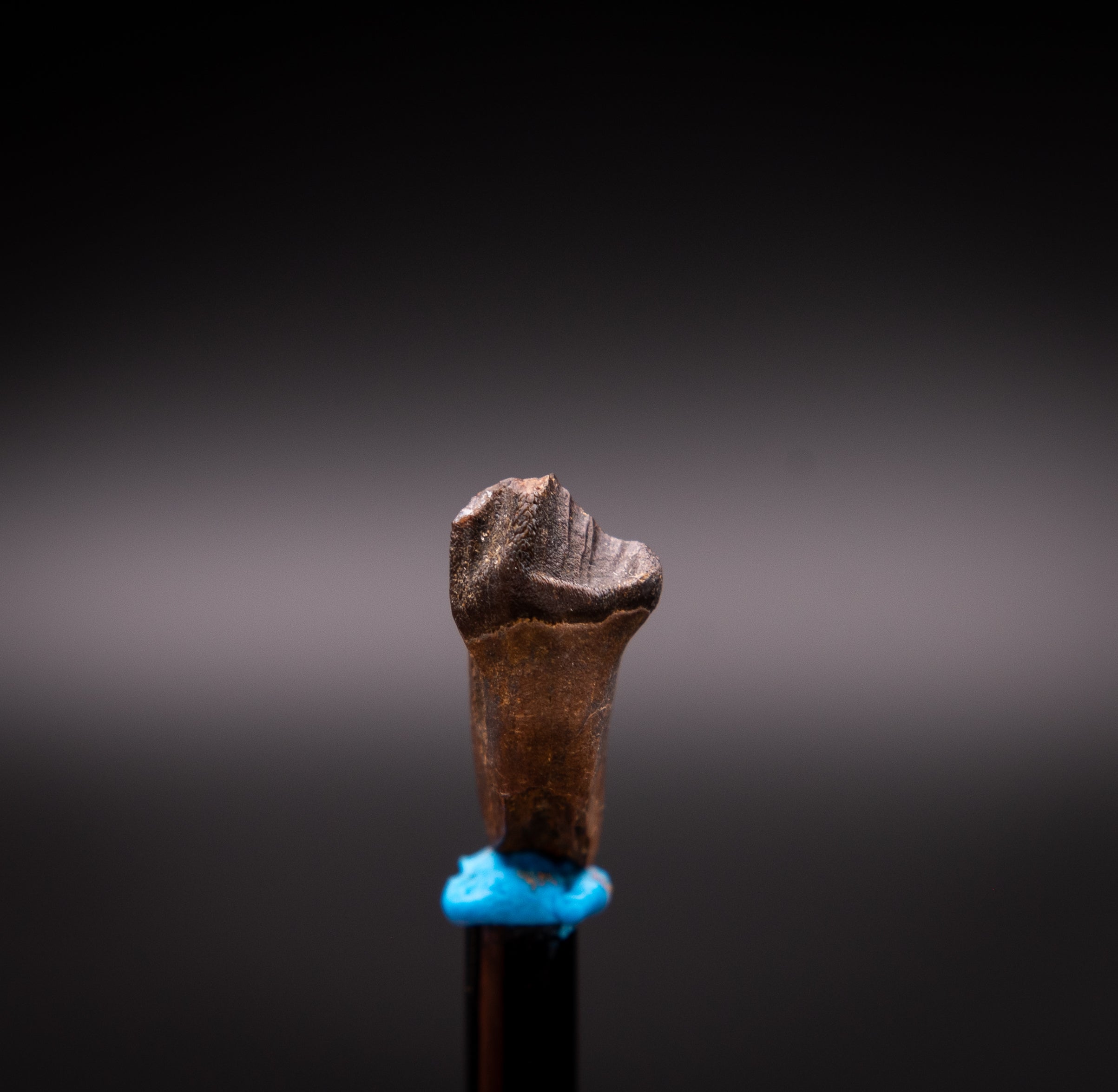





Unusual, Rooted Leptoceratops Dinosaur Tooth
Excellent, mostly rooted tooth with no repair or restoration.
Leptoceratops, a genus of small, herbivorous ceratopsian dinosaurs, lived during the Late Cretaceous period, approximately 68 to 66 million years ago. Its name, derived from Greek, means "slender-horned face," although ironically, Leptoceratops did not have the prominent horns that characterize many of its ceratopsian relatives, like Triceratops.
Leptoceratops was relatively small compared to other members of its family, measuring about 6 to 8 feet in length and weighing around 150 to 200 kilograms. It had a stocky body and a short, parrot-like beak. Unlike the larger ceratopsians, which walked primarily on all fours, Leptoceratops was likely bipedal or facultatively bipedal, capable of walking on two or four legs.
One of the most distinctive features of Leptoceratops was its short frill at the back of the skull, which lacked the elongated frills and horns found in many other ceratopsians. Its jaws contained a battery of shearing teeth, well-suited for its herbivorous diet, which likely consisted of low-growing plants.
Fossils of Leptoceratops have been primarily found in North America, particularly in regions that are now Montana, Wyoming, and Alberta. These discoveries have provided valuable insights into the diversity and evolution of ceratopsian dinosaurs, especially in understanding the range of body sizes and morphologies within this group. The relatively small size and unique features of Leptoceratops make it an important genus for studying Late Cretaceous dinosaur ecosystems.
Species
Leptoceratops gracilis
AGE
late Cretaceous
LOCATION
Wyoming
FORMATION
Lance
Size
.87"x .38"
Choose options






